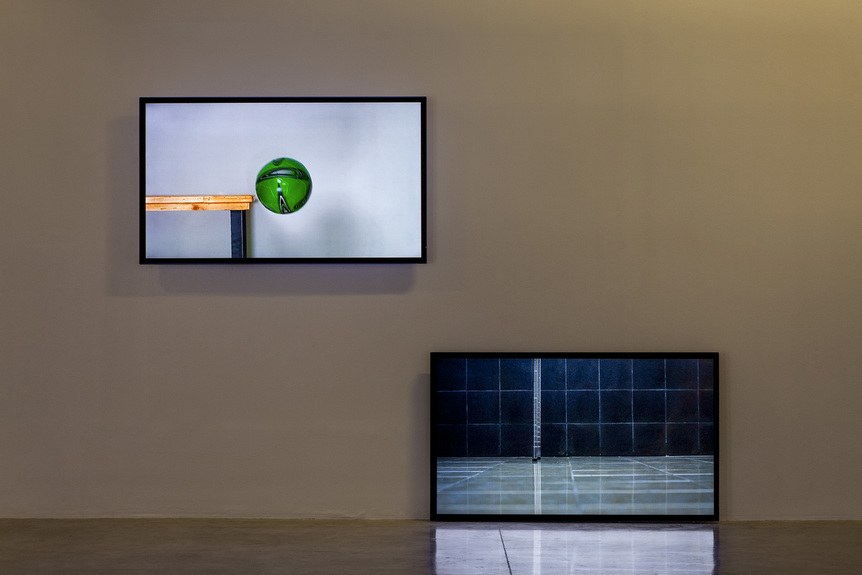-
From Current Issue
-
- Editor’s Letter Fire in the Heart
- Reviews I Gusti Ayu Kadek Murniasih
- Reviews 11th Seoul Mediacity Biennale: “One Escape at a Time”
- Dispatch Networked China
- One on One Monira Al Qadiri on Yukio Mishima
- Essays The rise of independent art spaces in pandemic-era Shanghai
- Features Tuan Andrew Nguyen
- Table of Contents
- Web Exclusives
- Archive
- Subscribe

R
E
V N
E
X
T
Installation view of “The Extra Extra Ordinary” at the Museum of Contemporary Art and Design, Manila, 2018. All images courtesy the Museum of Contemporary Art and Design.
“How can we attend to our everyday life when our faith in the future is clouded with much uncertainty and doubt in humanity? How can we learn more from the world while becoming a part of it?” These are the questions that open the introductory text for “The Extra Extra Ordinary,” an exhibition at the Museum of Contemporary Art and Design (MCAD) in Manila. Written by guest co-curator Esther Lu, the text also mentions that the show sought “to offer an alternative spacetime for us to exercise and explore how we can relate ourselves among things seen and unseen.”
Lu, along with MCAD’s director and curator Joselina Cruz, enlisted artists from different backgrounds to address these questions: Chou Yu-Cheng from Taipei, Gary-Ross Pastrana from Manila and the Indonesian art collective Tromarama founded by and comprising Febie Babyrose, Herbert Hans and Ruddy Hatumena.
Installation view of CHOU YU-CHENG’s Chemical Gilding, Keep Calm, Galvanise, Pray, Gradient, Ashes, Manifestation, Unequal, Dissatisfaction, Capitalise, Incense Burner, Survival, Agitation, Hit, Day Light. V, 2018, mixed media installation, dimensions variable, at “The Extra Extra Ordinary,” Museum of Contemporary Art and Design, Manila, 2018.
Chou’s mixed-media installation Chemical Gilding, Keep Calm, Galvanise, Pray, Gradient, Ashes, Manifestation, Unequal, Dissatisfaction, Capitalise, Incense Burner, Survival, Agitation, Hit, Day Light. V (2018) welcomed viewers. Among the work’s disparate objects are gradient paintings inspired by the colors of Manila and tires with coins hidden inside, while towering, corrugated metal sheets, suspended vertically, are meant to evoke a monumental set of wind chimes. Considering the reflective material is commonly used as cheap roofing, and the recent devastating typhoons that have ravaged the country, this component was particularly poignant in its comment on the frictions between natural habitats and built environments, and issues of survival.
The three works by Tromarama revealed their interest in hyperreality in the digital age and the interrelationship between the virtual and physical worlds. Quandary (2016) is a two-channel video that foregrounds the gap between the actual and the digital through various editing tricks. By making objects rolling off a table land at different items, defy the laws of motion, or sound differently upon impact, the artists play with synchronicity and incongruity. 24 Hours Being Others (2017), on the other hand, explores social media and identity using three printers, stacked in a column, that intermittently spew out social media posts containing either “#24hours,” “#being” or “#others” on A5-sized paper. A commissioned work titled Soliloquy (2018) responded to a different hashtag: “#kinship.” Posts including the hashtag were converted to binary data, which triggered the switches of the host of second-hand lamps scattered around the space, creating a symphony of lights.
On the mezzanine was the three-channel video installation Rewilding (2018) by Gary-Ross Pastrana, another commissioned work. The installation consists of three large panels leaning on columns, arranged in a way that prevents viewers from being able to access all three simultaneously. Projected on the panels are three different videos depicting flora, insects and pianos, among other subjects. Along with a soundtrack of amplified field recordings, atonal piano playing and interviews between the artist and three other protagonists, the sequences conjure a fictional scenario of termites boring into a piano, which invited contemplation on notions of transformation and survival.
Far from being didactic, the exhibition and its works opted for more poetic approaches to “[relating] ourselves among things seen and unseen” in an attempt to “learn more from the world.” The loose relationships between the objects displayed and the ideas that they are supposedly charged with left room for personal interpretations. However, the curatorial theme framing the works might have been too subtle to stimulate, resulting in a show discouragingly esoteric for some yet incredibly enriching for others.
“The Extra Extra Ordinary” is on view at the Museum of Contemporary Art and Design, Manila, until November 18, 2018.
To read more of ArtAsiaPacific’s articles, visit our Digital Library.
















